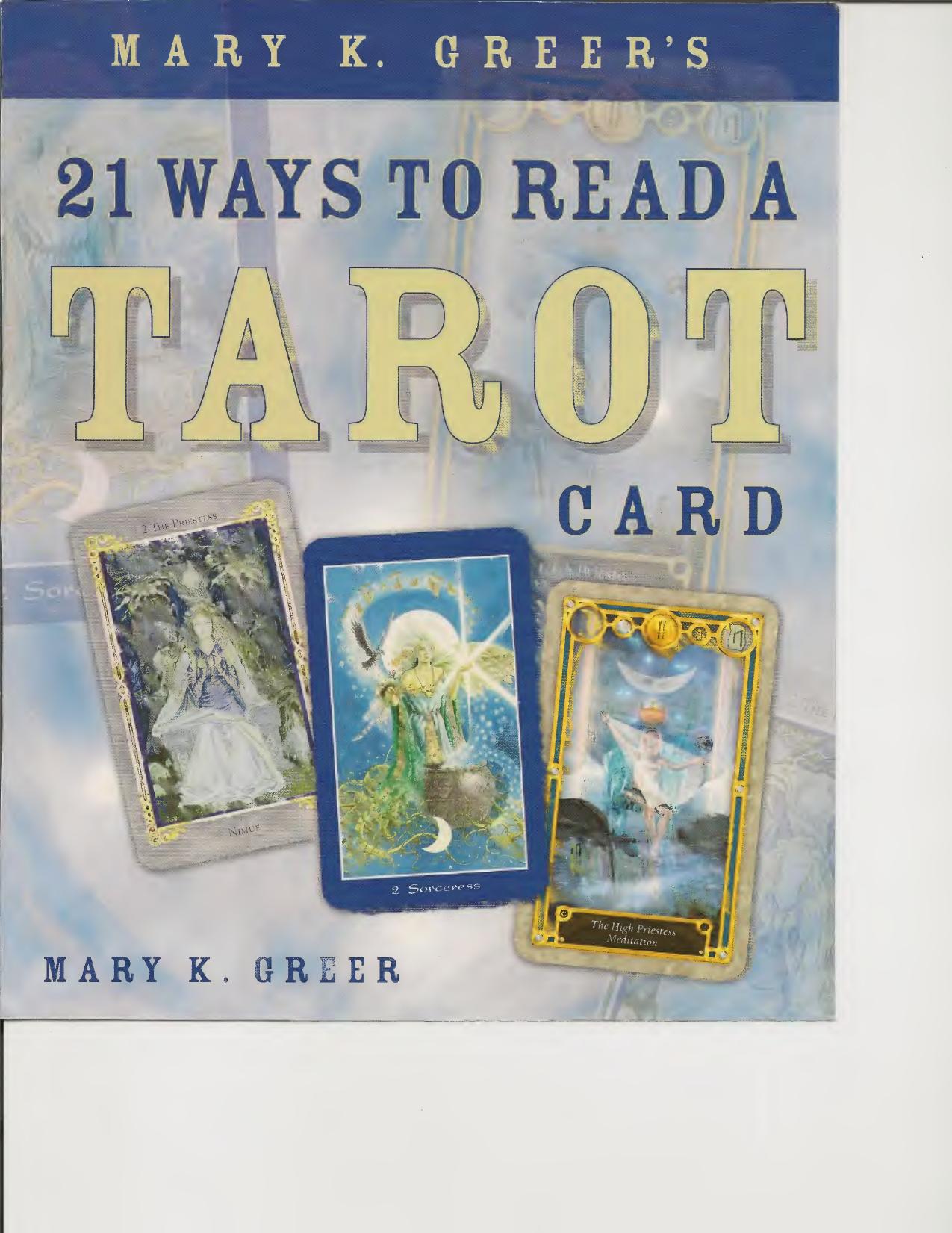Mary K. Greer's 21 Ways to Read a Tarot Card by Mary K. Greer

Author:Mary K. Greer [Greer, Mary K.]
Language: eng
Format: epub, pdf
Tags: reader, minor, prediction, minor arcana, predictive, card reading, suits, Divination, future, tarot reading, major, major arcana, oracles, Fortune, fortunetelling, forecast, reading, oracle cards, tarot spread, spread, arcana
Publisher: Llewellyn Worldwide, LTD.
Published: 2011-11-08T03:00:00+00:00
[contents]
Step
14
Dignity & Theme
A card is strong or weak, well dignified or ill dignified,
according to the cards next to it on either side.
—S. L. MacGregor Mathers, Book T
The Way of the Apprentice
This step explores how a card’s meanings are tempered, strengthened, opposed, or brought into focus by other cards, especially through similarities and differences. You’ll learn about “dignities” and how the overall theme or lesson of the reading emerges from patterns of symbol repetition. It also explains how anomalies (deviations or abnormalities) can be important.
Similarities and Differences
Comparison and contrast of the details of two or more cards is what makes a reading dynamic. This is a key factor in weaving the web of overall significance. If I’m doing a reading with you and we’re comparing a card in a past position with one in the future, I might note a few ways these two cards are similar (checking to see if you agree), and then I’ll ask you how the cards are different. Similarities suggest parallels between the past and future. Differences point to changes between what happened before and what might happen later, or in varying areas of life.
Activity
14:1
Look at your chosen card and the two additional cards you drew in Step 12 (or use any two- or three-card spread). List the similarities and differences among them. What do these suggest?
Dignities
Dignities is a term for finding affinities (i.e., friendships) or antipathies among two or more tarot cards that can strengthen or weaken their effect in a spread. These are based on how well inherent factors support or oppose each other.
Similarities show where two cards might be friendly and support the attitudes and values of each other. The differences suggest where they may be unfriendly or even irreconcilable, each having a different agenda, needs, style, or perspective. Although most used when comparing suits and elements, dignities is actually a general term for all of the following kinds of situations:
Suit: Cards of the same suit or polarity intensify those qualities in each other for good or ill. For instance, wands and swords are both yang or masculine; cups and pentacles are both yin or feminine.
Element: Cards with different elements are relatively friendly or antagonistic, depending on whether they have shared qualities or not; for instance, wands and cups, as fire and water, elementally contain nothing in common. (See “The Way of the Adept” on page 150 for more details.)
Number: Cards of the same number stress the characteristics of that number. Even- numbered cards emphasize balance; odd allows for deviation.
Sequence: Sequences of cards (like 2, 3, 4 or page, knight, queen), whether in the same suit or not, promote progress and further those goals (for good or ill).
Location: A card in a spread position where the position either assists or undermines the card’s meaning can help or hinder its expression (for instance, a sword in a Mind position is supported, whereas a sword in a Body position can be experienced as even more difficult than usual). This is called locational dignity.
Astrology: The astrological attributions of cards can harmonize or create dissonance with each other.
Download
Mary K. Greer's 21 Ways to Read a Tarot Card by Mary K. Greer.pdf
This site does not store any files on its server. We only index and link to content provided by other sites. Please contact the content providers to delete copyright contents if any and email us, we'll remove relevant links or contents immediately.
Becoming Supernatural by Dr. Joe Dispenza(7133)
Tools of Titans by Timothy Ferriss(6991)
The Witchcraft of Salem Village by Shirley Jackson(6596)
Inner Engineering: A Yogi's Guide to Joy by Sadhguru(5925)
The Four Agreements by Don Miguel Ruiz(5544)
The Power of Now: A Guide to Spiritual Enlightenment by Eckhart Tolle(4785)
The Wisdom of Sundays by Oprah Winfrey(4643)
Room 212 by Kate Stewart(4130)
Fear by Osho(4102)
Pale Blue Dot by Carl Sagan(4029)
The David Icke Guide to the Global Conspiracy (and how to end it) by David Icke(3904)
Rising Strong by Brene Brown(3795)
Animal Frequency by Melissa Alvarez(3768)
How to Change Your Mind by Michael Pollan(3694)
Sigil Witchery by Laura Tempest Zakroff(3663)
Secrets of Antigravity Propulsion: Tesla, UFOs, and Classified Aerospace Technology by Ph.D. Paul A. Laviolette(3654)
Real Magic by Dean Radin PhD(3583)
The Art of Happiness by The Dalai Lama(3401)
Man and His Symbols by Carl Gustav Jung(3338)
